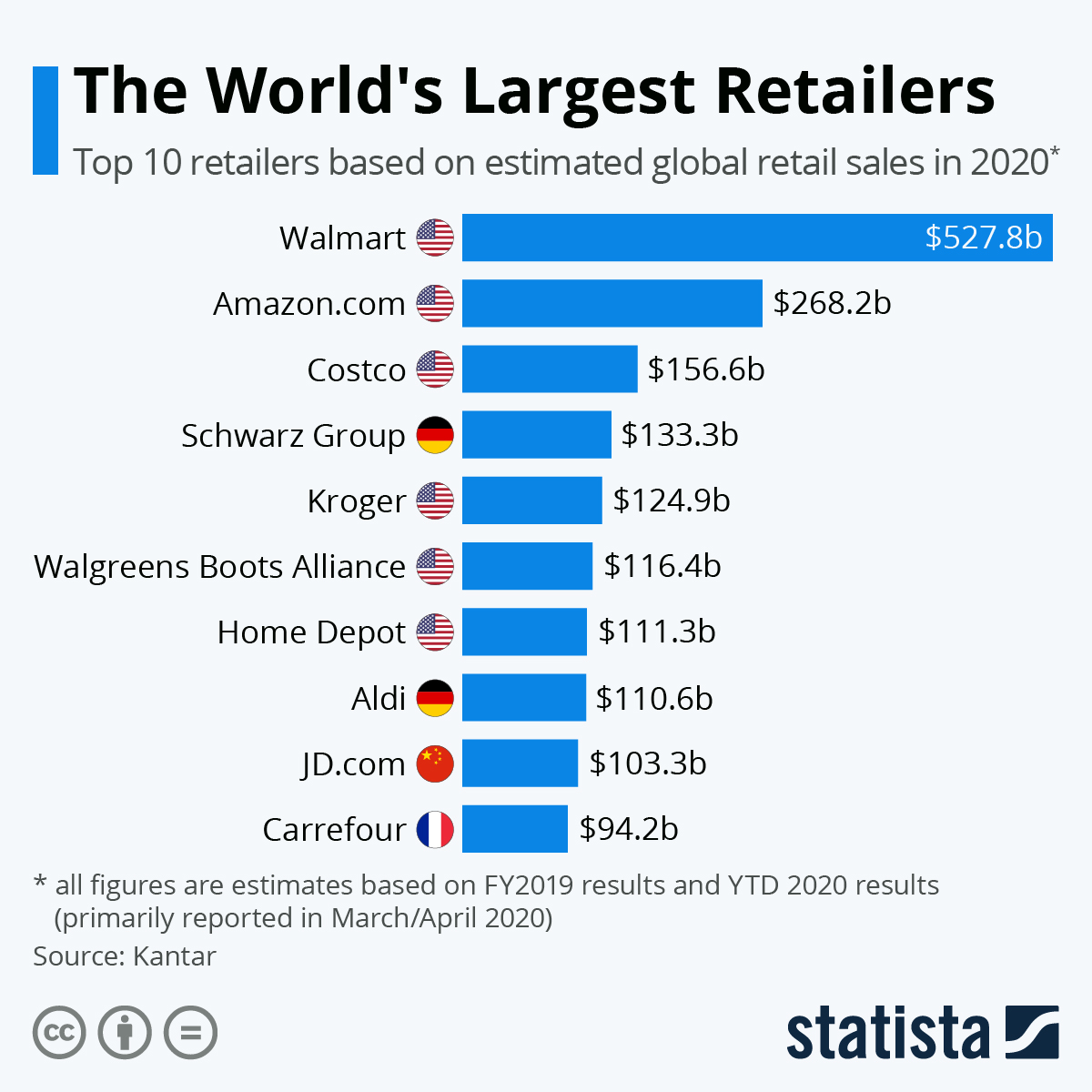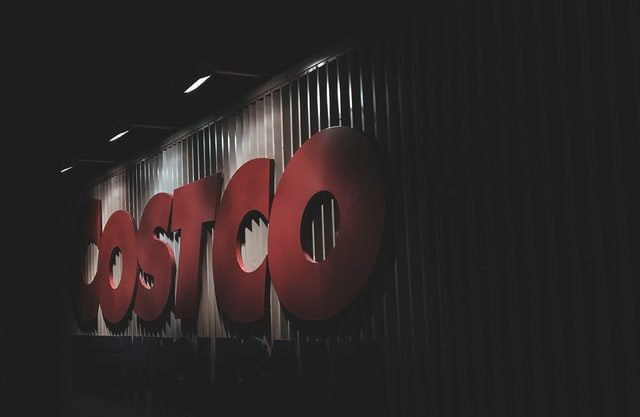My living room is always a mess.
No matter how much I clean it, we get deliveries of household staples every other day, and then I roll up my sleeves and place them on the respective shelves. The reason is – my parents believe in “buying in bulk.” For them, buying in bulk automatically translates into a cost-effective deal.
No wonder we are never out of staples and essentials. There are plenty!
Now let us talk about one such retail giant, Costco.
History
The story of the “warehouse club” retail model started with Sol Price. He is considered the innovator of the warehouse retail model.
- In 1954, Sol had launched FedMart in a converted airplane hangar on Morena Boulevard in San Diego, California and in 1976 founded the Price Club.
- On September 15th, 1983 – James Sinegal and Jeffery H. Brotman sowed the seeds of the first Cosco warehouse in Seattle.
- In 1993, the two companies merged under the brand name PriceCostco. In 1994, the Price brothers left the company to start another venture Price Smart.
- In 1997, the company rebranded itself as Costco Wholesale Corporation and undertook the rest of Price Club warehouses under the umbrella of Costco.
Now that you know how today’s Costco was formed let’s unfold its unique business model.
Costco’s business model focuses on high volume sales, efficient inventory management, and private-label branding.
In 2021, Costco was ranked 12th on Fortune 500 list. As per National Retail Federation (NRF), Costco is the 6th most impactful global retailer. As of 2021, Costco operates 817 warehouses worldwide. Costco is a place where one can buy goods in bulk at rock-bottom prices. It sells everything from groceries, electronics, furniture, apparel, medicines, (the famous) $1.50 hot dogs to diamond rings and gasoline. You name it, Costco has it!
 You will find more infographics at Statista
You will find more infographics at Statista
Decoding the Business Model of Costco and understanding how does Costco make money
Over the last several years, Costco has seen a yearly increase in its global net sales, rising from 87 billion U.S. dollars in 2011 to 163.2 billion U.S. dollars by 2020. But what is the business of Costco that is helping the brand grow so rapidly at a CAGR of 7.2%?

Exclusive Club: Members Only!
Costco Wholesale Corporation is a growing membership-only retail company, which offers goods in bulk at competitive prices. Well, Costco isn’t similar to your neighbourhood store, where you can walk in, get a couple of items and check out. Costco operates a “members only” warehouse club. One has to pay an annual subscription fee to access its vast, cavernous, and deep-discounted warehouse.
It mainly offers two types of memberships – Basic and Executive, costing $60 and $120, respectively. Depending on the customer base, the memberships are categorized as gold, business, and executive.
Costco has undeniably broken all the rules of traditional retail. You will be surprised to know that it earns little revenue by selling goods but generates enormous revenue by selling membership subscriptions. This business model allows Costco to undersell and helps retain the members; and makes it stand out from its competitors. Costco has announced a membership renewal rate of 91%. in its Q3 FY 21 results.
In 2020, just over 105 million people had paid for a yearly Costco membership. The number of cardholders has been growing steadily since 2014, registering a CAGR of 5.5%.

Efficient Supply Chain Management
Costco has gone up from a single store to around 800+ stores worldwide. Each store is 140,000 square feet on average and carries less than 4000 stock keeping units or SKUs, which is much lower than that of its competitor – Walmart, which stocks around 100,000 SKUs. Trader Joe’s also works on low SKUs. Check out the story on another giant retailer called Trader Joe’s.
Costco focuses on limiting the touchpoints on products throughout its supply chain cycle. Costco buys goods in bulk from the suppliers and uses the cross-docking system to move goods to its distribution centres. From here on, as per the orders, the goods are transferred to the required warehouse. Cross-docking is a practice in logistics of unloading materials from a manufacturer or mode of transportation directly to the customer or another mode of transportation, with little or no storage in between.
Costco’s no-frills warehouses act as both the shopping centre and the inventory; and are economical to maintain. Because of such a curated logistics setup, Costco maintains its Selling, General, and Administrative expenses (SG&A) at a minimum level.
Its focus is to sell limited products which further eliminates the excess inventory and unsold goods. Costco’s strong leadership, vast network, and high volume sales enable it to negotiate lower prices with suppliers.
Due to the insane fan following of Costco, its inventory usually sells before the payment due dates to suppliers. As a result, suppliers pump large amounts of money into Costco’s inventories. Thus, the retail giant enjoys a highly competitive advantage.
The Treasure Hunt
They say nothing in the store is placed by accident. The warehouses of Costco have minimum signage, and it keeps rearranging the inventory. The necessities are placed at the very end of the aisle. One has to move all around the cavernous warehouse to get the product one needs. The more you move, the more you explore, and the more you end up putting in your cart. In Costco’s parlance, this is a “treasure hunt.”
Once the members have shopped, they swipe their Costco cards. As per Evercore ISI, Costco has a team of around 100+ buyers who have access to customers’ purchasing data. The team analyses this data to decide what products should be placed on the shelves and what surprising elements can be added that aren’t obvious to the shoppers. It could be anything, even an original Picasso painting at a discounted price!
Once one is inside a bargain store, one might feel everything around is at the best deal. As Costco sells lesser products, it triggers a sense of urgency among its members to purchase impulsively because the deal you see today might not be tomorrow.
Comprehensive marketing strategy of Costco that makes its users love the brand
Costco has built a cult-like fan following with its 360-degree marketing strategy. Its members have admitted that they visit Costco 3-4 times a week. Its customers are revered for loyalty. So much so that one fan got himself a Kirkland tattoo! But what aspects of its marketing strategy make members remain hooked to Costco?
Assurance of Quality:
Costco’s mission – “To continually provide our members with quality goods and services at the lowest possible prices.” Costco’s deeply discounted products should not be confused with low-quality products. Quality is so paramount for Costco that it started its private label in 1995.
Private label- Kirkland Signature:
Costco understands well that its customers are in for value and quality. The aim to launch its private-label was simple – quality goods at budget-friendly prices. Here Costco applies the strategy of co-branding. Costco doesn’t manufacture the products itself but partners with titans such as Starbucks, Humboldt Creamery, Niagara, and Ocean Spray, to name a few.
It is essential to understand the distinction between the manufacturer’s actual products and Kirkland’s products. For instance, some of Kirkland’s coffee is produced by Starbucks. Moreover, this has empowered Costco to stand out with the added benefit of further supporting higher margins. Costco members are die-hard fans of Kirkland’s wines and liquors. They say it is tastier and cheaper than many of the wines of high-end brands.
And do you know that Costco is the largest wine retailer in the US?
Food Court:
Yes, you read it right! Members love the food court at the warehouses. $1.5 hot dog and a refillable drink are the most famous amongst all. Costco has kept the price the same since 1985. Bob Nelsen once said – “It’s legacy. Look at all the people talking about it… It’s one of the things we are known for”. The food is delicious and obviously, highly affordable. It’s a great strategy to entice shoppers to stuff their bellies and load their shopping carts.
Free Samples:
This is a definite crowd-puller. Who would say no to free food or service? Employees hand out samples of different food items or occasional demos of electronics to the strolling customers. Costco states that this is a crucial strategy in the customer’s shopping experience. The ploy is, if you like it, you might buy it too!
Have a look at the ACSI 2021 analysis report; Costo is ranked 2nd in customer satisfaction.
Costco: An Ecosystem
Costco is not just a wholesale store. Costco’s business model focuses on building an ecosystem. The company has been smart enough to extend its arms in the areas where members can visit its store more frequently. The other off-the-shelf services are its ancillary businesses- gasoline stations, pharmacies, optical and hearing aid centres, and the travel business.
Moreover, there are credit card and car buying services too. All of this combined empowers Costco to add experiential value to its customers beyond the four walls of its warehouse.
Do you know that Costco has recently launched an Audio book store and a free app to listen to the purchased audiobooks?
Spreading “Costco -Craze” Internationally
Following the giant retailer, analysts state that Costco is doing better outside the US than inside it. This is partly because of in-house competition and partly because there is no club-modelled retailer similar to Costco in many countries.
In July 2019, when Costco opened its first store in China, both the crowd and the response were overwhelming. There was a traffic jam, long queues, and utter chaos, all of this for Costco. Ultimately, Costco had to call it a day early over safety concerns. The company has big plans to open its first warehouse in New Zealand and Sweden in the coming years.
Costco plays by the golden rule – Take good care of your employees and suppliers, they will take care of your customers, and in return, you make good money. Playing by this rule, Costco has recently raised the minimum wage of its employees to $16 per hour, surpassing its competitors. As per CEO Craig Jelinek, Costco pays most of its employees an average of $24 per hour. One of its more notable perks is insurance coverage for its part-time workers. In 2017, a Statista survey gave Costco the top spot in its survey of America’s Best Large Employers.
 You will find more infographics at Statista
You will find more infographics at Statista
E-commerce presence of Costco
Costco initially didn’t focus much on including digital strategy in its business model. Analysts have been critical of Costco’s lack of a digital road plan and often expressed threats by its rivals. But now, Costco has penetrated the e-commerce space as well.
In March 2020, Costco had acquired “last-mile” specialist Innovel to boost its e-commerce sales of bulky items. It also partnered with Instacart to roll out same-day delivery across Canada. This year the wholesale, retail giant has also collaborated with Uber Technologies to pilot- test the same-day delivery service across Texas, US. The company reported an increase of 44.4% YoY in e-commerce sales during FY 2021, and net sales for the fiscal year increased 17.7%, to $192.05 billion from $163.22 billion last year.
With its unique business model and commitment to providing affordable ways of shopping to its members, Costco will remain a leading retail giant in the years to come.
-AMAZONPOLLY-ONLYWORDS-START-
Also, check out our most loved stories below

Why did Michelin, a tire company, decide to rate restaurants?
Is ‘Michelin Star’ by the same Michelin that sells tires, yes, it is! But Why? How a tire company evaluations became most coveted in the culinary industry?

Starbucks prices products on value not cost. Why?
In value-based pricing, products are price based on the perceived value instead of cost. Starbucks has mastered the art of value-based pricing. How?

Nike doesn’t sell shoes. It sells an idea!!
Nike has built one of the most powerful brands in the world through its benefit-based marketing strategy. What is this strategy and how Nike has used it?

Domino’s is not a pizza delivery company. What is it then?
How one step towards digital transformation completely changed the brand perception of Domino’s from a pizza delivery company to a technology company?

Why does Tesla’s Zero Dollar Budget Marketing Strategy work?
Touted as the most valuable car company in the world, Tesla firmly sticks to its zero dollar marketing. Then what is Tesla’s marketing strategy?

Yahoo! The story of strategic mistakes
Yahoo’s story or case study is full of strategic mistakes. From wrong to missed acquisitions, wrong CEOs, the list is endless. No matter how great the product was!!

Apple – A Unique Take on Social Media Strategy
Apple’s social media strategy is extremely unusual. In this piece, we connect Apple’s unique and successful take on social media to its core values.
-AMAZONPOLLY-ONLYWORDS-END-
















